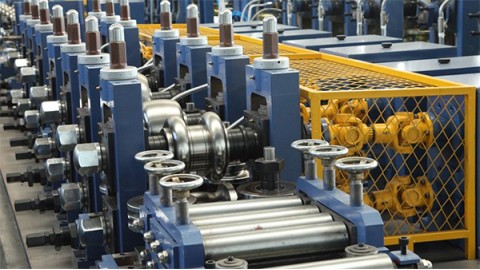China’s Top 10 Exports
by Daniel Workman
China's flag
by Flagpictures.org
Located in East Asia near key trading partners including Japan, South Korea, Vietnam, India and Singapore, the People’s Republic of China shipped US$3.594 trillion worth of products around the globe in 2022.
That dollar amount reflects a 44.1% gain compared to $2.494 trillion during 2018.
Year over year, the overall value of China’s exports rose 6.9% from $3.362 trillion in 2021.
According to exchange rate metrics from the International Monetary Fund, the Chinese yuan has depreciated by -1.8% against the US dollar since 2018 and fell by -4.5% from 2021 to 2022. China’s weaker local currency makes Chinese exports paid for in relatively stronger US dollars less expensive than in the prior years.
Mainland China’s biggest export products by value in 2022 were led by phone devices including smartphones, computers, electronic integrated circuits, solar power diodes and semi-conductors, then electric storage devices. In aggregate, those major exports account for almost one-fifth (18.9%) of the China’s overall exports sales. The commodities themselves suggest a fairly diversified range of exported goods.
China ranks among world-leading nations for exporting cell phones, electronic circuit components and automotive parts or accessories.
China’s Best Customers for its Exports
The latest available country-specific data shows that 57.1% of products exported from mainland China were bought by importers in: the United States of America (16.2% of China’s global total), Hong Kong (8.3%), Japan (4.8%), South Korea (4.5%), Vietnam (4.1%), India (3.3%), Netherlands (also 3.3%), Germany (3.2%), Malaysia (2.6%), Taiwan (2.3%), United Kingdom (2.3%) and Singapore (also 2.3%).
From a continental perspective, almost half (47.4%) of mainland China’s exports by value were delivered to fellow Asian countries while 20.7% were sold to importers in Europe. China shipped another 19.9% worth of goods to buyers in North America.
Smaller percentages went to Latin America (4.8%) excluding Mexico but including the Caribbean, Africa (4.6%), and Oceania (2.6%) led by Australia and New Zealand.
Given China’s population of 1.4 billion people, its total $3.594 trillion in 2022 exported products translates to about $2,500 for every resident in the East Asian economic powerhouse. That per-capita dollar amount exceeds the average $2,150 one year earlier in 2021.
China’s Top 10 Exports
The following export product groups categorize the highest dollar value in Chinese global shipments during 2022. Also shown is the percentage share each export category represents in terms of overall exports from China.
Electrical machinery, equipment: US$954.8 billion (26.6% of total exports)
Machinery including computers: $552 billion (15.4%)
Vehicles: $150.2 billion (4.2%)
Plastics, plastic articles: $143.5 billion (4%)
Furniture, bedding, lighting, signs, prefabricated buildings: $130.9 billion (3.6%)
Articles of iron or steel: $110.3 billion (3.1%)
Toys, games: $103.3 billion (2.9%)
Organic chemicals: $101.9 billion (2.8%)
Knit or crochet clothing, accessories: $90.9 billion (2.5%)
Iron, steel: $77.3 billion (2.2%)
China’s top 10 exports accounted for just over two-thirds (67.2%) of the overall value of its global shipments.
Vehicles was the fastest grower among the top 10 export categories, up by 25.2% from 2021 to 2022.
In second place for improving export sales were organic chemicals via a 23.4% gain.
China’s shipments of articles made from iron or steel posted the third-fastest gain in value, up by 15.5%.
The lone decliner among China’s top 10 export categories was the furniture, bedding, lighting, signs and prefabricated buildings, incurring a -6.2% drop year over year.
Note that the results listed above are at the categorized two-digit Harmonized Tariff System (HTS) code level. For a more granular view of exported goods at the four-digit HTS code level, see the section Searchable List of China’s Most Valuable Export Products further down near the bottom of this article.
Products Creating China’s Greatest Trade Surpluses
Mainland China posted an overall $877.6 billion trade surplus in 2022, up by 27.9% from $686.1 billion in black ink during 2021.
The following types of Chinese product shipments represent positive net exports or a trade balance surplus. Investopedia defines net exports as the value of a country’s total exports minus the value of its total imports. In a nutshell, net exports represent the amount by which foreign spending on a home country’s goods or services exceeds or lags the home country’s spending on foreign goods or services.
Machinery including computers: US$349.8 billion (Up by 10.6% since 2021)
Electrical machinery, equipment: $310.1 billion (Up by 34.6%)
Furniture, bedding, lighting, signs, prefabricated buildings: $128.1 billion (Down by -6%)
Articles of iron or steel: $100.8 billion (Up by 18.8%)
Toys, games: $100.5 billion (Up by 1.7%)
Knit or crochet clothing, accessories: $86.8 billion (Up by 6.1%)
Clothing, accessories (not knit or crochet): $71.5 billion (Up by 11.7%)
Vehicles : $69.4 billion (Up by 106.4%)
Plastics, plastic articles: $68.3 billion (Up by 41.6%)
Footwear: $55.8 billion (Up by 23.4%)
China has highly positive net exports in the international trade of machinery including computers as well as electronics. In turn, these cashflows indicate China’s strong competitive advantages under machinery-related categories.
Products Causing China’s Biggest Trade Deficits
Below are exports from China that result in negative net exports or product trade balance deficits. These negative net exports reveal product categories where foreign spending on home country China’s goods trail Chinese importer spending on foreign products.
Mineral fuels including oil: -US$471 billion (Up by 33.5% since 2021)
Ores, slag, ash: -$220.8 billion (Down by -17.7%)
Gems, precious metals: -$73.6 billion (Up by 53.1%)
Oil seeds: -$65.4 billion (Up by 14.4%)
Copper: -$58 billion (Up by 4.3%)
Meat: -$29.9 billion (Down by -2.7%)
Pharmaceuticals: -$25.9 billion (Up by 683.5%)
Woodpulp: -$22.1 billion (Up by 10.3%)
Cereals: -$18.4 billion (Down by -2.6%)
Perfumes, cosmetics: -$14.3 billion (Down by -19.6%)
Cars & Trucks Exports 2020
Pause
Unmute
Remaining Time -5:51
Fullscreen
Cars & Trucks Exports 2020
China has highly negative net exports and therefore deep international trade deficits for mineral fuels-related products particularly crude oil, petroleum gas and coal.
These cashflow deficiencies clearly indicate China’s competitive disadvantages in the international mineral fuels-related market, but also represent key opportunities for China to improve its position in the global economy through focused innovations.
Mainland China’s Major Export Companies
China placed about 150 corporations on the Forbes Global 2000. Below is a sample of the major Chinese export companies that Forbes included.
Aluminum Corporation of China (aluminum)
BYD (cars, trucks)
Dongfang Electric (electrical equipment)
Dongfeng Motor Group (cars, trucks)
Gree Electric Appliances (household appliances)
Midea Group Co. Ltd. (household appliances)
PetroChina (oil, gas)
SAIC Motor (cars, trucks)
Sinopec-China Petroleum (oil, gas)
Sinopharm Group (pharmaceuticals)
Tsingtao Brewery (beverages)
According to global trade intelligence firm Zepol, the following smaller companies are also examples of leading Chinese exporters.
APLL (beddings, clothing)
Carven Industries (furniture, building stone)
Maersk Logistics China (footwear, bedding, clothing)
UPS SCS China (chairs, beddings)
Winners Products Engineering (cooking appliances, sheets, charcoal)




